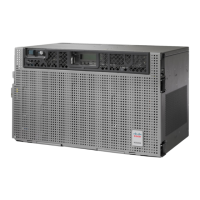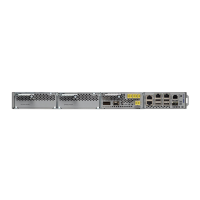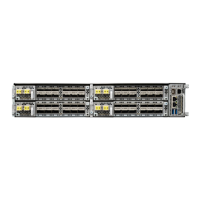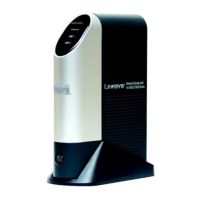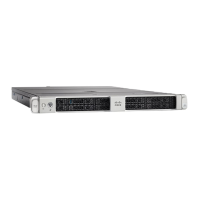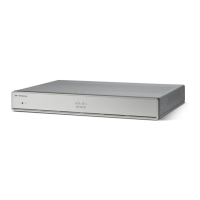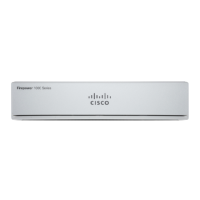Installing the GBIC, SFP, SFP+, and XFP Optical Modules in Cisco ONS PlatformsInstalling the GBIC,
SFP, SFP+, QSFP, XFP, CXP, CFP and CPAK Optical Modules in Cisco NCS Platforms document.) If
an incorrect threshold has been set, adjust it to a value within the allowed limits.
6. Verify the proper cabling and clean the fibers according with the site practice. Cabling procedures are
located in the Turn Up a Node chapter of the Configuration guide, and a fiber-cleaning procedure is located
in the Maintain the Node chapter of the same guide.
7. Verify using an optical test set that a valid signal exists on the line and feeds the Client-Rx port. (For
specific procedures to use the test set equipment, consult the manufacturer.) Test the line as close to the
receiving card as possible. If the alarm condition does not clear, move to next step.
8. Complete the Install an SFP, SFP+, or XFP Connector, on page 62 procedure or the Physically Replace
a Card, on page 453 procedure as appropriate for your purposes.
DETAILED STEPS
Step 1 Ensure that the signal entering the Client-Rx port is provisioned with the correct physical-layer protocol.
Step 2 Ensure that the signal feeding the Client-Rx port is provisioned with the correct line speed.
Step 3 Check the PM of the Client-Rx port.
Step 4 Verify that received power is above the optics threshold.
Step 5 Ensure that a proper threshold has been provisioned. (Refer to the Provision Transponder and Muxponder Cards chapter
in the Configuration guide. Refer to the SFP/XFP plug-in specifications located in the Installing the GBIC, SFP, SFP+,
and XFP Optical Modules in Cisco ONS PlatformsInstalling the GBIC, SFP, SFP+, QSFP, XFP, CXP, CFP and CPAK
Optical Modules in Cisco NCS Platforms document.) If an incorrect threshold has been set, adjust it to a value within
the allowed limits.
Step 6 Verify the proper cabling and clean the fibers according with the site practice. Cabling procedures are located in the Turn
Up a Node chapter of the Configuration guide, and a fiber-cleaning procedure is located in the Maintain the Node chapter
of the same guide.
Step 7 Verify using an optical test set that a valid signal exists on the line and feeds the Client-Rx port. (For specific procedures
to use the test set equipment, consult the manufacturer.) Test the line as close to the receiving card as possible. If the
alarm condition does not clear, move to next step.
Step 8 Complete the Install an SFP, SFP+, or XFP Connector, on page 62 procedure or the Physically Replace a Card, on page
453 procedure as appropriate for your purposes.
If the alarm does not get cleared, you need to report a Service-Affecting (SA) problem. Log into the Technical Support
Website at http://www.cisco.com/c/en/us/support/index.html for more information or log into http://www.cisco.com/c/
en/us/support/web/tsd-cisco-worldwide-contacts.html to obtain a directory of toll-free Technical Support numbers for
your country.
LOS (BITS)
Default Severity: Minor (MN), Non-Service-Affecting (NSA)
Logical Object: BITS
The LOS (BITS) alarm indicates that the control card has an LOS from the BITS timing source. LOS for
BITS means the BITS clock or the connection to it failed.
Cisco NCS 2000 series Troubleshooting Guide, Release 11.0
273
Alarm Troubleshooting
LOS (BITS)
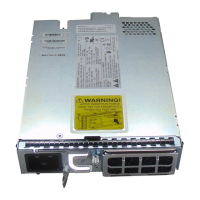
